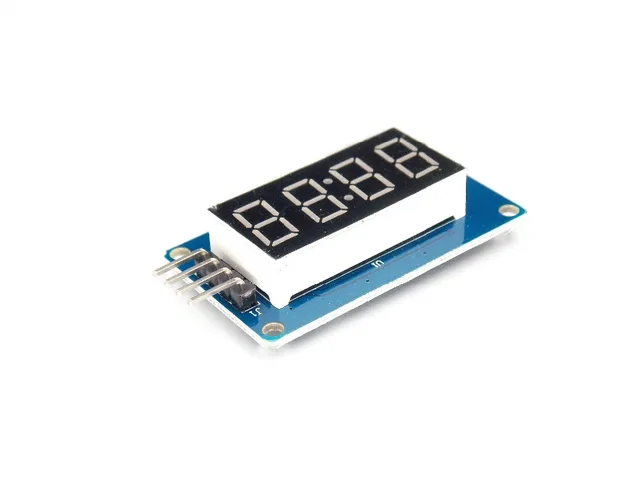2020. 2. 11. 15:35ㆍ카테고리 없음
Working of 4 – Digit 7 – Segment LED DisplayA 7 – Segment LED display, as the name indicates, is an assembly of LED bars, where each bar can be powered individually. Each LED bar is in the form of a hexagon and the overall arrangement will be in the form of ‘8’.The following figure shows a general representation of 7 – segment LED display with dedicated names to each segment.Each segment can be powered separately to display digits from 0 to 9.
Serial 4 Displays Download
The following figure shows the pattern of digits displayed by a 7 – segment LED display.As mentioned earlier, in a 7 – segment display, the LEDs can be arranged in common anode or common cathode mode.The equivalent circuit of a 7 – segment display in common anode and common cathode configuration is shown below.To determine whether the 7 – segment display is common anode or cathode, a small test circuit can be built. The common terminal of the display is connected to a current limiting resistor.The resistor is given positive voltage and any of the segments (A to G) is connected to ground. If the segment glows, then it is common anode display.If the segment doesn’t glow, reverse the polarity of the supply and then it glows. This is a common cathode display.It is important to determine whether the display is of common anode or common cathode type as the code for Arduino (or any microcontroller) will depend on it.In this project, we are using a 4 – digit 7 – segment LED display. We can use a compact 4 – digit module or use four individual 7 – segment displays and multiplex them to make a 4 – digit display.The following figure shows four multiplexed 7 – segment LED displays.Respective segment pins (A to G and DP) of all the 7 – segment displays are connected with each other.Hence, only 8 pins will be sufficient to control all the eight segments of all four displays. These eight pins are connected to eight pins of Arduino.We assume that the selected 7 – segment module is of common cathode type.
The four common pins from four displays are connected to collector terminals of four different transistors through current limiting resistors.The emitter terminals of four transistors are connected to ground. The four base terminal of the four transistors are connected to four pins of Arduino through current limiting resistors.All the connections are shown in the circuit diagram.The aim of this project is to demonstrate the working of a 4 – digit 7 – segment LED display using Arduino by implementing a simple counter.The circuit diagram and written code are developed for common cathode type 7 – segment LED display. CodeYou are free to use above code.
Feel free to ask your doubts and questions in below comment. Our technical person love to help you.
Serial 4 Displays Free
RS232 standard is popular in many scientific directions and is widely used for lab equipment, quality and process controllers, various sensors, measuring tools, etc. However you may experience some issues while trying to analyze serial port activity.

A number of aspects has to be taken into consideration: hardware and cabling, communication settings and protocols. To be able to perform COM monitor activities successfully and detect any issues with serial data, you'll need a reliable serial port sniffer with a comprehensive RS232 activity log.Contents.1. Serial Monitor by Eltima SoftwareFirst on our list is - a high-quality COM port sniffer product that can log, display and help you analyze RS232/422/485 port activity in the system.
Getting all the data from this useful app allows for quality application and drivers development, as well as testing and debugging of COM port devices. No additional hardware is required for RS232 port Monitor solution by Eltima. There are Standard and Professional editions depending on your needs. With RS232 Analyzer you can connect to ports that are already open and start monitoring at once. Data is captured in real time and displayed conveniently. Data packets are easy to compare.
You can record IOCTLs with all details and parameters. This COM port sniffer can monitor several ports at once so users can get the data on how apps interact with several serial devices within a session. The collected data can be viewed as table, line, dump or terminal, with sump view being able to show binary, ASCII data and port settings. Another great feature this serial port testing software offers is emulating data transmission to a serial device so you can see and analyze the reaction of a device to certain commands and data.